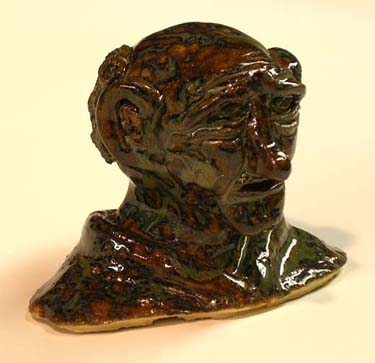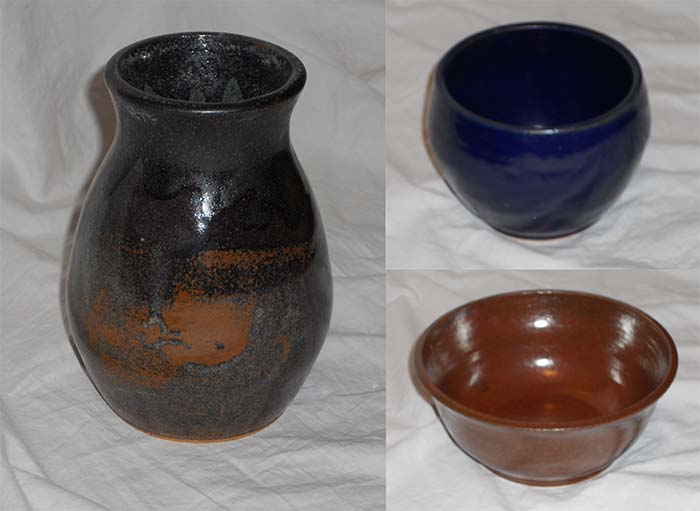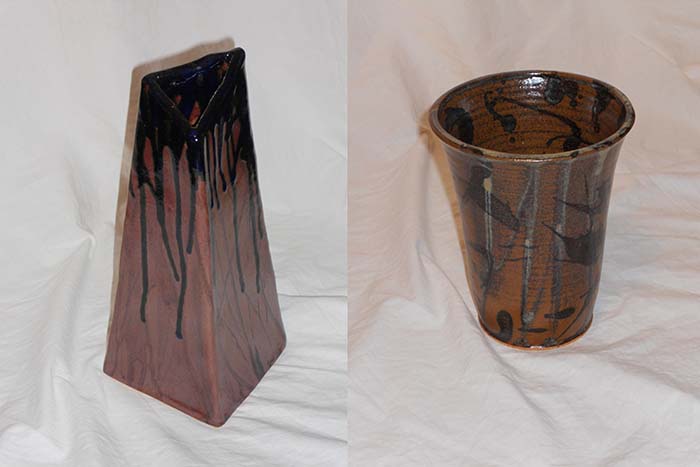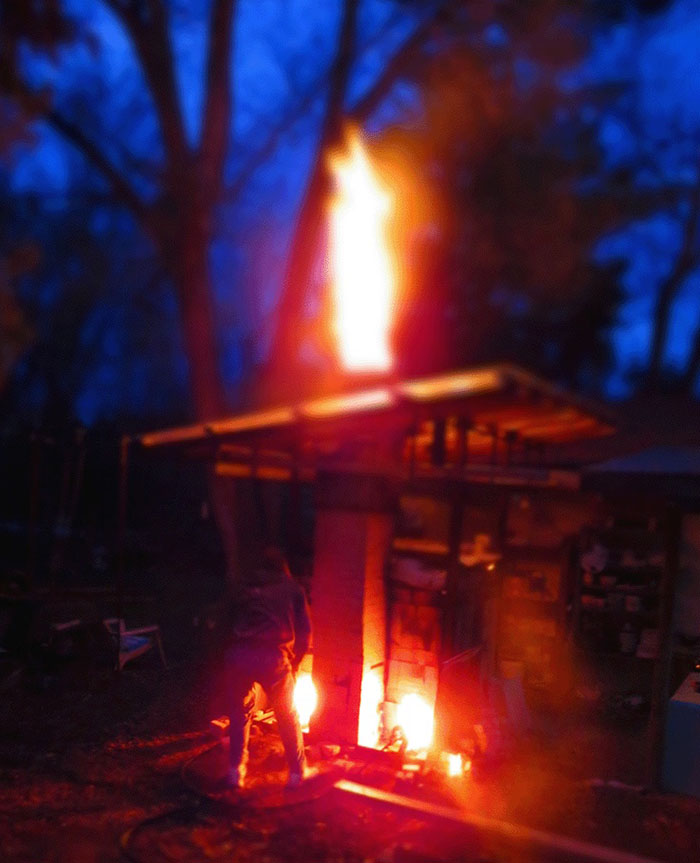







I had to include this picture to give you some idea of what a really serious ceramics guy looks like firing the ceramics. The first time I took a ceramics class many years ago, the kiln was an electric oven that somewhat resembled an oversized top loading clothes washing machine. Captain Mudslinger doesn't fool around with such basic equipment. He built his own propane fired kiln from special high temperature kiln brick. The kiln is roughly a 6-foot cube. There are two big propane burners at the base. He starts early in the morning, and by early evening, the kiln will have reached about 2,250 degrees (F). The last big blast kicks it up the last 50 degrees to the target 2,300 degrees. But the manner in which it is fired for that last 50 degrees also produces an oxygen depletion that causes chemical changes in the glaze.
The manner in which it is fired for that last 50 degrees is where we conclude Captain Mudslinger is completely crazy. For the first 2,250 degrees, he's burning propane gas. But for that final blast, he swaps out the gear for a special pump, dual hoses, and nozzles to pump two streams of propane in raw liquid form directly into the fire. That's what you see going on in this picture. Joy and I started at what we thought was a safe distance for observing. By the time it was over with, we were at least 5 times farther away (although I'm sure it was still a totally false sense of security).
You might think the neighbors would object to this craziness. But they don't. In fact they don't say a thing. His studio is next to a cemetery.